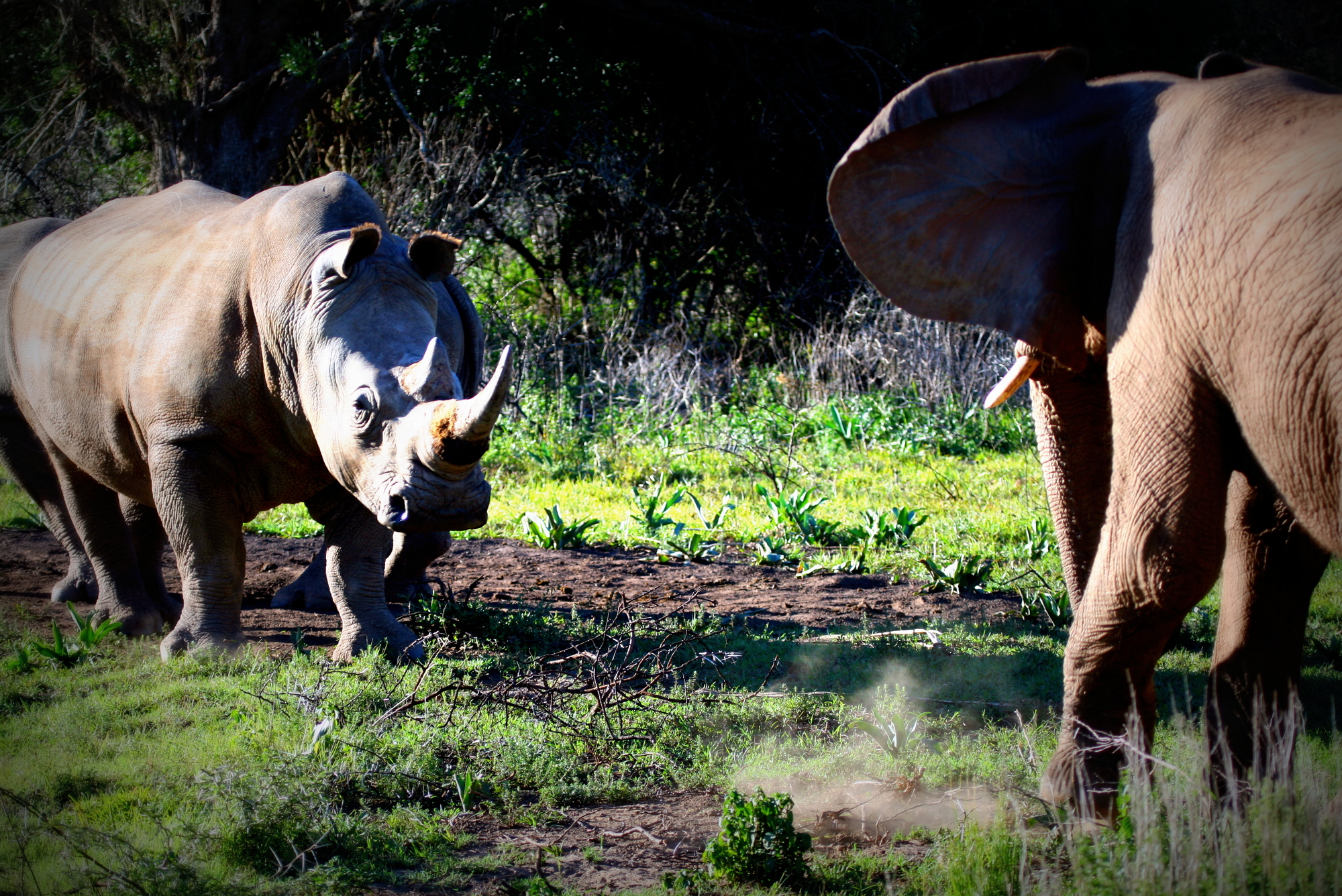World Animal Day: We Honour Elephant & Rhino
Today is World Animal Day and across the world concerned citizens march to create awareness about the poaching crisis killing over 35,000 elephant and 1,000 rhino's each year. We thought it fitting to honour these amazing mega-herbivores and publish some thoughts by wildlife veterinarian, William Fowlds, on why these animals are flagship species for conservation.
During the last few decades the Eastern Cape has seen a positive shift in land use. Sustainability, conservation and community have become key concepts in the 21st century and many local livestock farms are being converted into wilderness areas and game reserves that both benefit surrounding communities and aid in the conservation of endangered wildlife.
Dr Fowlds explains that the conservation of farmland into Big 5 protected areas would not be possible without rhino and elephant: "Their status as flagship species is what makes them the most valuable components of conservation." The flagship species concept holds that raising the profile of particular species can improve biodiversity and conservation efforts. Dr Fowlds explains below:

Why elephants and rhino are so important...
1. Supporting the ecosystems of others
By-products and waste products from mega-herbivores, including dung, urine and carcasses all play a vital role in the nutrient cycle, sometimes supporting entire ecosystems such as that of paracoprid and telecoprid dung beetles, scavengers such as hyena, jackals and vultures, along with a whole host of other decomposers and detritivores.
2. Important role in the Food Chain
Elephant and rhino are primary consumers (herbivores) feeding on a variety of vegetation types including grasses, forbs, roots, bulbs, tubers, leaves, flowers, shrubs, bark etc. They fill a distinct niche as bulk grazers and bulk browsers in the food chain.
Due to their large mass and digestive capabilities, elephants and rhinos fill an incredibly distinct ecological niche in which they (elephants especially) consume vast amounts of poor-quality woody material in comparison to smaller species requiring higher quality forage.
3. Symbiotic Relationships
Both elephant and rhino help support a large diversity of bird life with which they share symbiotic relationships such as Oxpeckers, Fork-tailed Drongos, Cattle Egrets and Cape Glossy Starlings to name a few.
4. Sculpting the Landscape
Elephant and rhino alike influence and shape the landscape, creating new game trails, excavating mud wallows and watering holes as well as assisting in planting of vegetation through seed dispersal.
Elephant, and to a lesser extent rhino, play a role in preventing bush encroachment through trampling and breaking down trees and bushes, increasing the available biomass thus in turn allowing for a greater diversity and density of game to thrive on the more abundant grasslands.
5. Enriching the soil
Mega-herbivores play an important role in supplying nutrients to the soil by defecating and urinating around watering holes and other denuded (worn away) areas of land.
6. Sources of prey
Elephant and rhino calves along with injured, sick and old animals, are a potential prey source for large predators such as lion and pack hunters such as wild dogs and spotted hyena.
7. Central to eco-tourism and the wildlife industry
On top of all this, elephant and rhino are both part of the famous “Big 5” and, being charismatic mega-fauna, play a huge role in the public’s fascination with African wildlife. The eradication of these species from protected and wilderness areas would change not only the entire habitat and ecosystems within these areas, it would drastically alter the eco-tourism and conservation industries of Africa.
Please join the call for an end to the killing and a ban on ivory and rhino horn before it's too late.









